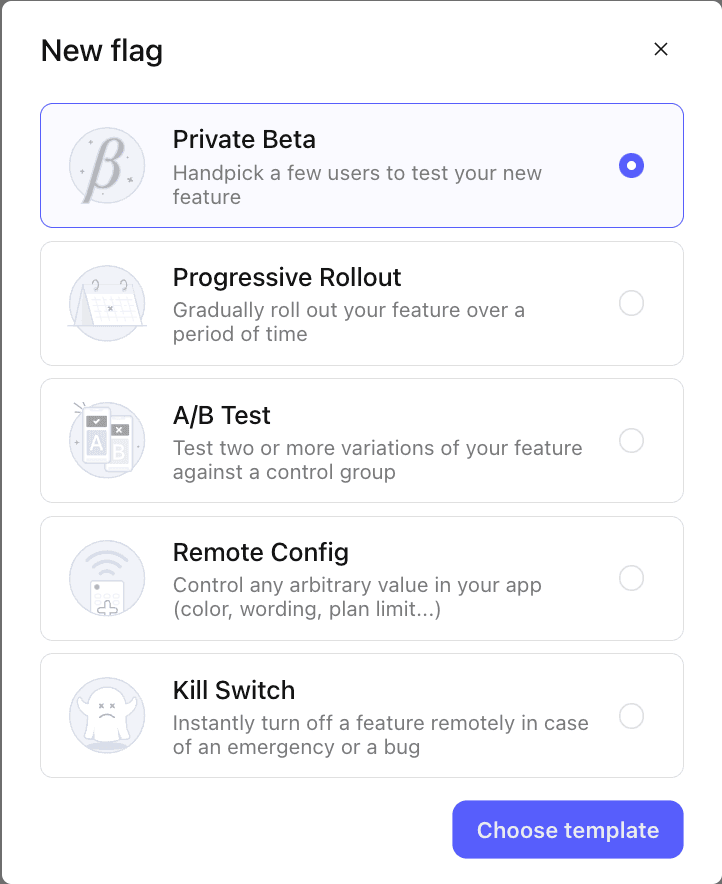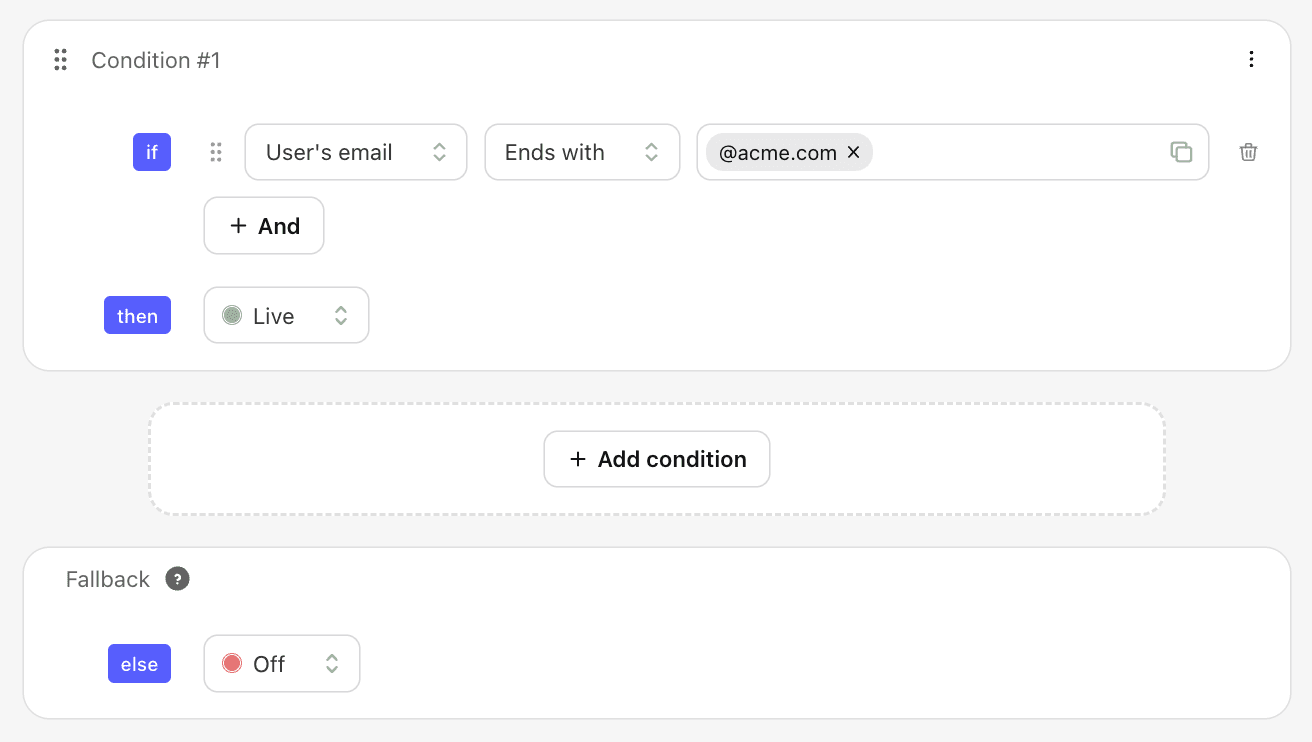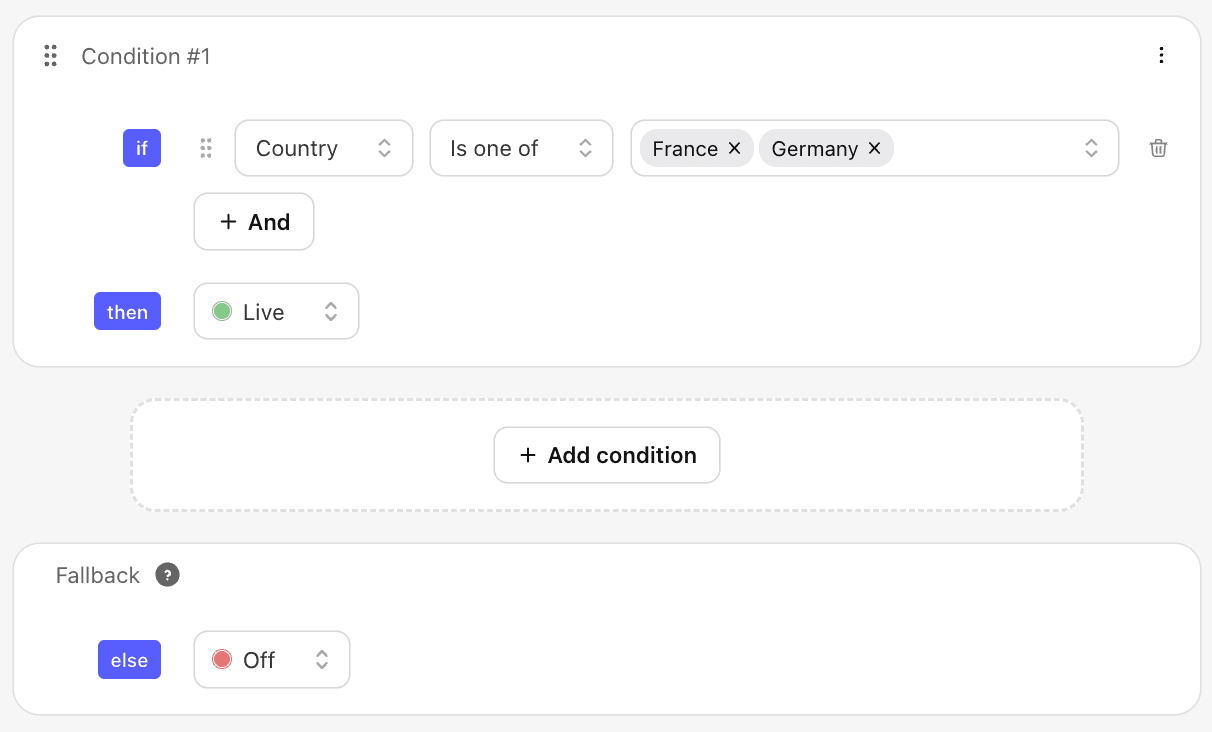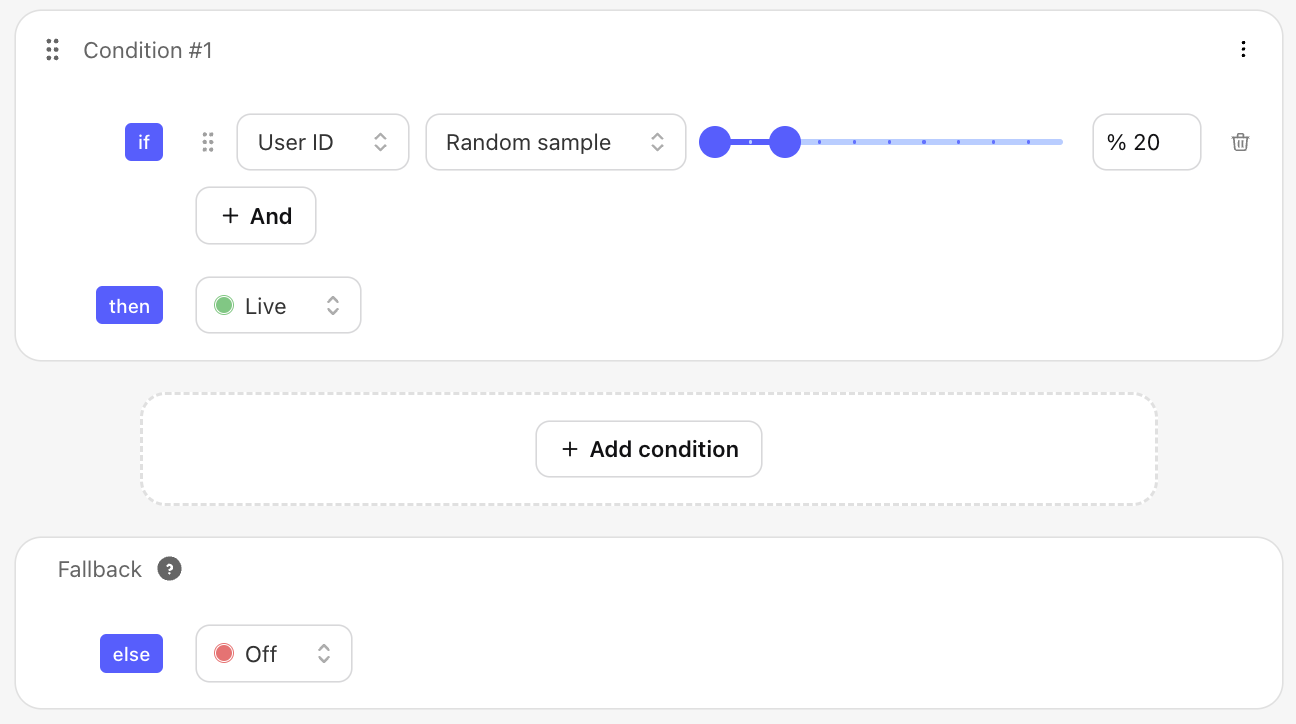Progressive rollout
Overview
Progressive rollout is a technique used to gradually introduce new features to your app while minimizing risk and ensuring a smooth user experience.
In practice, it allows you to release new features to a subset of users or a small percentage of the overall user base, monitor their impact, and gradually increase the rollout as confidence in the feature grows.
This approach will allow you to catch and address issues early, reduce the risk of introducing bugs or disruptions, and get feedback from users before a full rollout is implemented.
Beta-testing a feature on specific users
It is often a good idea to test a new feature on a small subset of users that you handpick. This allows you to get feedback from users that are close to you and that you trust.
This is very straight forward to do with Tggl, simply create a flag and choose the Private beta template:

This template automatically crates a condition where all users having their
email ending with @acme.com will be included in the rollout. You can
replace this condition with the domain of you company to test the feature
internally, or you can manually list emails of users that you want to
include to be more specific:

Once you are confident that the feature works as expected in production, you can move on to a more advance rollout strategy bellow.
How to roll out a feature by country?
If you operate in multiple countries, you may want to roll out new feature one country at a time, at least in the beginning. This allows you to spot issues early on without impacting your entire user base.
From the Tggl app simply create a flag and choose the Private beta template. Then update the condition to select the countries you want to include in the rollout:

Here we chose to release our feature in two countries. You can add more countries to the list once you are ready to expand.
How to roll out a feature to a small percentage of users?
Sometimes rolling out by country is not possible or too drastic. Or you may want to test your feature on small volumes before rolling it out to a larger audience to slowly test if your infrastructure can hold the load.
In this situation you cannot handpick the users or the country, you have to randomly assign users to either see the feature or not see the feature. This can be complex because you want to make sure of two fundamental things:
- The same user is always assigned to the same variation. This is to ensure that the user experience is consistent and that the user is not confused by the feature appearing and disappearing randomly when refreshing the page or re-starting the app. This is called stickyness.
- The distribution of users is uniform and completely decorrelated from other features. This is to ensure that the feature is not over-represented in some segments of the user base and under-represented in others. And if two features are rolling out at the same time, that they don't interfere with each other.
Thankfully Tggl takes care of all of this for you. The only thing you have to worry about is which property of the context to base the stickyness on?
- If you want to roll out the feature on logged-in users, you can use the
userIdproperty of the context. This will ensure that the same user always sees the same variation, even when switching device. - If you want to roll out the feature on anonymous users, you can use a session ID stored in a cookie, or use a device ID if you are on mobile. The only downside of this approach is that if the user switches device, or clears its cookies, it might be assigned to a different variation.
Once you have decided on the property to use, simply create a flag and set it up like so:

Here our feature is rolled out to 20% of the users. You can increase this value as time passes until you reach 100%.
Scheduling a progressive rollout
The progressive rollout strategy makes you come back to Tggl a few times to add more users or increase the percentage of users that see the feature as time passes. This can be tedious and repetitive.
Thankfully Tggl allows you to schedule a progressive rollout plan over any period of time and automatically increase the percentage of users that see the feature at predefined intervals. See the release schedule section for more details.